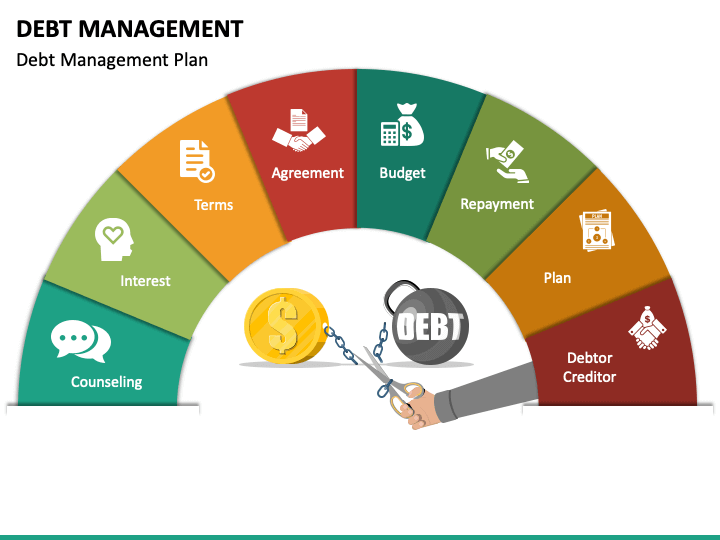Comparing Financial Debt Combination Alternatives: More Discussion Posted Here
Comparing Financial Debt Combination Alternatives: More Discussion Posted Here
Blog Article
Everything You Required to Understand About Producing a Personalized Debt Administration Strategy
In the realm of individual money, designing a customized financial obligation monitoring strategy is commonly the keystone of achieving monetary security and peace of mind. As you navigate the complexities of creating a personalized financial obligation monitoring plan, recognizing the complexities of each action is crucial to your financial success.
Evaluating Your Present Debt Scenario
One have to first conduct an extensive assessment of their present debt responsibilities before creating an effective financial obligation management plan. Analyzing your present financial debt situation is an important initial step in acquiring control of your funds. Begin by gathering all needed financial papers, such as charge card statements, lending agreements, and any kind of outstanding expenses. Develop a comprehensive checklist of each debt, including the complete amount owed, rates of interest, minimal monthly settlements, and due days. This extensive overview will certainly give a clear image of your economic standing and aid focus on which debts to address first.
After assembling this details, determine your overall debt-to-income ratio by separating your monthly financial debt repayments by your month-to-month revenue. This proportion is a key sign of your capability to take care of current financial debt levels efficiently. Furthermore, examine your credit record to determine any kind of mistakes or discrepancies that may be impacting your credit report. Recognizing these aspects of your financial scenario will certainly assist you in establishing a tailored financial debt administration strategy customized to your specific demands and objectives.
Setting Financial Goals and Targets

When setting monetary objectives, it is necessary to be details, measurable, possible, appropriate, and time-bound (SMART) As an example, you may set a goal to settle a particular amount of financial debt within a specific period, such as decreasing your bank card balance by $5,000 in the following year - More Discussion Posted Here. By establishing clear targets similar to this, you can track your progression and remain inspired to achieve your financial debt administration objectives
In addition, consider prioritizing your financial debts based on aspects such as rate of interest, outstanding equilibriums, and payment terms. By focusing on high-interest financial debts first, you can save cash in the lengthy run and accelerate your journey towards economic liberty. Remember, everyone's monetary circumstance is one-of-a-kind, so tailor your goals and targets to fit your individual needs and situations.
Developing a Realistic Budget
Crafting a well-defined budget plan is a basic step in efficient debt monitoring and monetary planning. A sensible budget offers as a roadmap for your financial health, helping you track your earnings, expenditures, and debt repayments. To produce a sensible spending plan, beginning by detailing all your incomes. This includes your wage, side hustle revenues, or any type of other financial inflows. Next, magazine all your fixed costs such as rent or home loan, utilities, insurance coverage, and car loan settlements. Variable costs like grocery stores, home entertainment, and transport must additionally be consisted of. Separate in between wants and needs to prioritize necessary expenditures and recognize areas where you can cut down.
When setting budget plan limitations, be sincere with on your own regarding your investing habits and monetary obligations. Assign a section of your revenue towards repaying debt while guaranteeing you have some funds for emergency situations and cost savings. Consistently testimonial and readjust your spending plan as required to stay on track with your financial goals and financial debt payment strategy. By sticking to a practical budget, you can successfully manage your financial debt and work in the direction of a more safe and secure financial future.
Exploring Financial Debt Settlement Methods
After developing a practical budget plan, the following crucial step in effective financial obligation administration is to check out numerous financial debt settlement approaches. One common technique is the snowball approach, where you concentrate on paying off the smallest financial debts initially while making minimum repayments on bigger financial debts. This approach can aid construct energy as you see smaller sized financial debts being gotten rid of, giving inspiration to deal with larger ones.
One more approach is the avalanche method, which entails prioritizing debts see page with the highest possible rate of interest. By targeting high-interest debts first, you can minimize the general amount you pay in rate of interest gradually. This technique may be more economical in the long run, despite the fact that it could take longer to see private debts fully settled.
Financial debt debt consolidation is one more alternative where you incorporate multiple debts right into a single lending with a reduced rate of interest. This can streamline your settlement procedure and possibly lower the complete passion paid. Nevertheless, it's crucial to carefully think about the fees and terms connected with debt consolidation to guarantee it's the best option for your monetary scenario.
Monitoring and Changing Your Plan

Adjusting your plan may include reapportioning funds to tackle high-interest financial obligations first, discussing with financial institutions for reduced interest rates or better payment terms, or discovering additional revenue resources to quicken debt repayment. As your economic circumstance progresses, your financial obligation management strategy should adapt accordingly to continue to be reliable. By remaining adaptable and positive in surveillance and readjusting your plan, you can enhance your efforts in the direction of repaying your financial debts efficiently and attaining your economic objectives.
Final Thought
In final thought, creating an individualized financial obligation administration plan includes analyzing current financial debt, establishing monetary goals, creating a reasonable budget, exploring settlement methods, and tracking and adjusting the plan as needed. By adhering to these actions, individuals can take control of their monetary circumstance and job towards becoming debt-free. It is very important to remain regimented and devoted to the strategy in order to accomplish long-term economic stability.
One must first perform an extensive examination of their present financial obligation responsibilities before formulating a reliable financial debt monitoring plan.After developing a sensible budget plan, the following essential action in effective financial obligation monitoring is to explore different financial debt repayment approaches - More Discussion Posted Here.To efficiently handle your financial obligation, continuous tracking and adjustment of your financial obligation monitoring strategy are crucial elements for lasting economic security.Adjusting your plan might entail reapportioning funds to useful site take on high-interest debts initially, working out with lenders for lower interest rates or far better payment terms, or checking out extra income sources to speed up debt settlement.In verdict, developing a tailored financial obligation monitoring strategy includes assessing current financial obligation, establishing economic goals, creating a sensible budget plan, checking out payment approaches, and monitoring and readjusting the plan as needed
Report this page